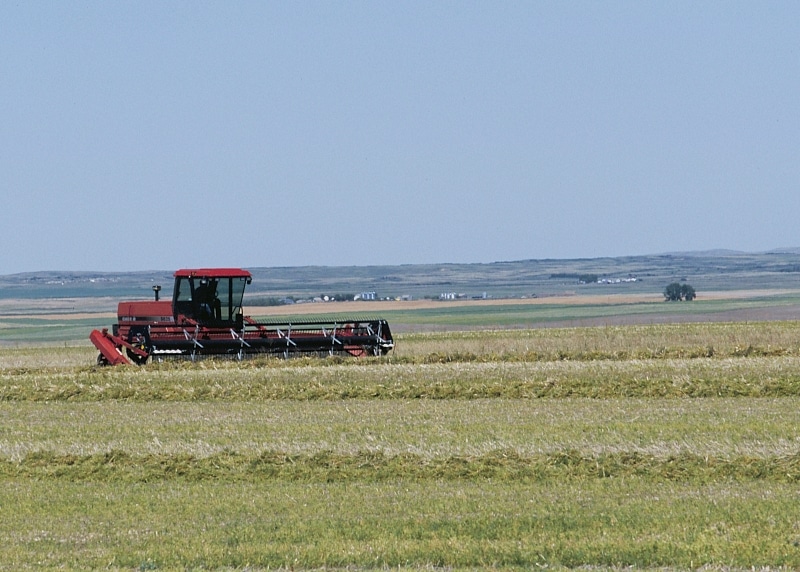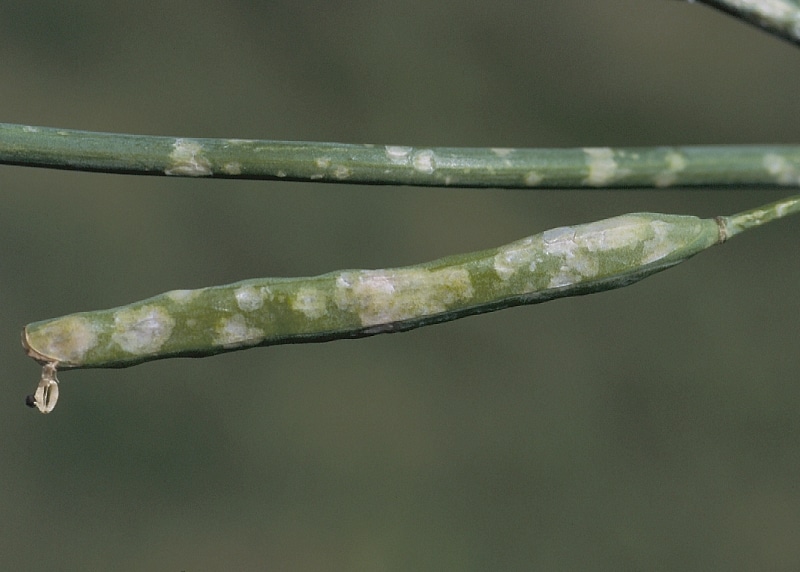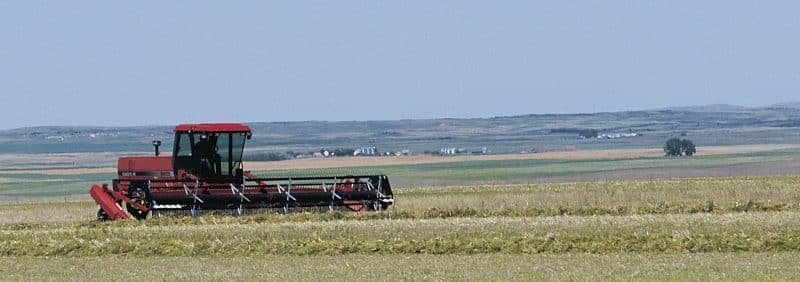
If your crop is looking healthy and strong with uniform maturity, you will likely have no problem deciding when to swath. However, if you have some variability in the staging of your stand due to hail damage, drowned out areas, dry areas, heat blasting, insect damage, disease or weed issues, it will make swath timing a more complicated decision.
Generally swathing should occur when 60% of seeds on the main stem are showing some colour change from green to brown, but a variable stand can make this hard to quantify. If this is your situation, determine where the majority of your yield will be coming from, and swath according to the best timing for that portion, (while trying to minimize the negative impact on the rest of the field). Read more swath timing tips.
While some hot, dry areas may be maturing at an impressive pace, taking a representative look at your field is still important, to prevent jumping the gun on this operation. Even though it may be tempting to get started on harvest, swathing too early can result in reduced yields and high green seed content.

If you have had hail damage on your podding canola you have some additional management decisions to consider. Although swathing can help reduce the impacts of hail on a canola crop, hail damage before swathing can also affect the developmental stage that your crop appears to be at. Hail can cause the pod to bruise, and if bruising shows up on more than 25-30% of the pod, the spots will turn white or brown and are likely to shatter. Hail can damage pods, causing them to dry down prematurely, giving the crop a more advanced look than it is actually at.
Not only the pod, but the location of these pods is also important to consider. If the hail damage strongly impacted your bottom pods, it is more important to try to swath a little earlier to avoid potential pod shatter (despite the increased risk of green seed), since the lower pods (which mature first) generally yield more than the upper pods. However, if the hail had more impact on the upper pods, which yield less, it may be best to accept the risk of pod shatter on these pods (with lower yield potential) and aim to limit the chance of green seed occurrence on the lower pods, by swathing at the ideal time for the lower pods. Read more about hail-damaged pods and swathing.
Use the canola swathing guide to help with timing decisions.

